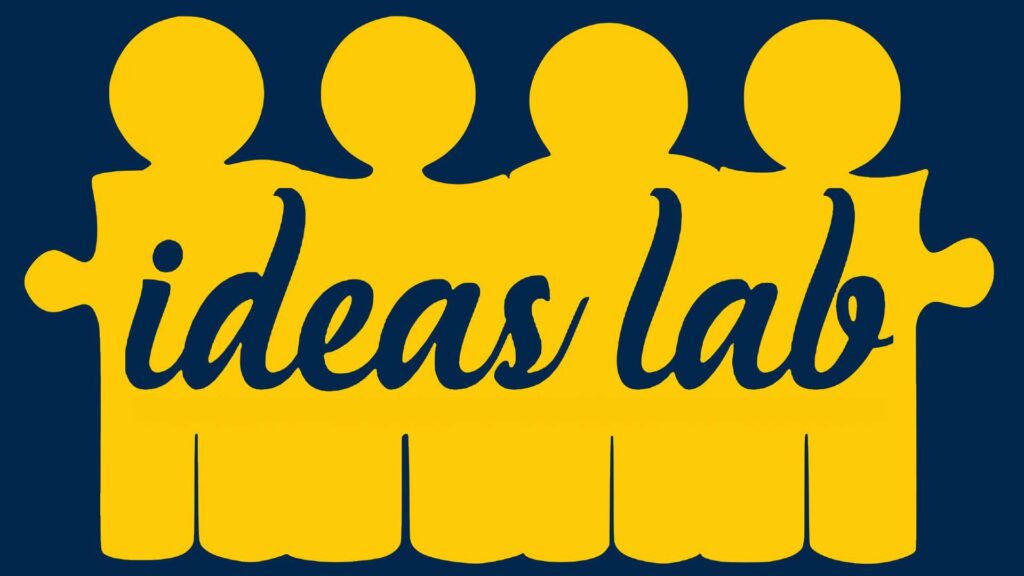2019 Ideas Lab: Predicting Human Performance
The BSI hosted the three-day Ideas Lab workshop on predicting human performance Oct. 13-15, bringing together U-M faculty from 11 different schools and institutes — Music, Theatre, and Dance; Business; Dentistry; Medicine; Engineering; Law; Life Sciences; Kinesiology; Literature, Science, and the Arts; Public Health; and Art and Design.
The BSI allocated up to $3 million for transformative research programs developed by participants in this U-M Ideas Lab—with the aim of propelling U-M to a position of national prominence in this area of novel, interdisciplinary approaches to predicting human performance based on existing strengths across campus.
Participants created interdisciplinary teams around the innovative research ideas they developed and worked on pre-proposals they presented at the end of the workshop. These collaborative teams will be invited to submit full proposals for the opportunity of funding.
Funded projects
In the field of music, the quality of performance is measured by more than just playing the notes accurately. A performance might be considered exceptional for a number of reasons, including its virtuosity, expressiveness, lyricism, and creativity. In the case of wind instruments and voice, the sound is literally the sonification of the performer’s breathing for the audience. There is therefore a direct correlation between exceptionalism in musical performance and the breathing of the performer. However, breathing is essential to the performance of all instruments as well as performance in a number of other fields. This project aims to understand the relationship between the quality of breathing and exceptional performance.
Principal investigator Sophia Brueckner, Stamps School of Art & Design
Humans, as social beings, act towards or react in response to others. When these interactions happen, human beings feel connected. Human connections are required for survival and play a crucial role in overall performance in several settings. Connections between patients and health professionals, for example, impact treatment outcomes, such as in mental health care and overall patient compliance. However, although human connectivity processes are ubiquitous from the moment we are born until later on in life, and their centrality to our quality of life is increasingly recognized, little is known about the mechanisms involved in forming and maintaining human connections. How do we connect with one another? Do we connect through empathy or through physical proximity? Are hormones involved in our connections? Considering such questions, this study proposes to assess the physiological and psychological components of human connections.
Principal investigator Julia Lee Cunningham, Ross School of Business
Undergraduates at the University of Michigan face numerous stressors throughout their studies, including graded presentations, high-stakes interviews for employment, as well as midterm and final exams. These critical events can create mental and physiological strain that compromises student academic performance and well-being. Strategies to boost resilience during such acutely stressful events could support our students and yield success in their undergraduate education and beyond. Learn how his mobile health (mHealth) technology was used to assess and identify risk factors associated with COVID-19 positivity in a population of college students.
Principal investigator Muneesh Tewari, Medical School
Creativity is rate-limiting for mankind’s innovative capacity and problem solving ability. Our ability to harness the power of human creativity is limited by a lack of mechanistic understanding for what makes one individual more creative than another, and what characterizes individuals’ state during moments of peak creativity. We aim to shed light on both of these questions, with the overarching goal of understanding how to make greater creativity accessible to everyone. Specifically, we will investigate the neurobiological underpinnings of both creative traits (i.e., having more lifelong creative accomplishment and/or potential for creative thinking) and creative states (i.e., being in the moment of one’s peak creativity).
Principal investigator Sara Aton, College of Literature, Science, and the arts
As digital natives, students are asked to provide torrents of personal biometric and behavioral data through everyday use of their wearable and cellular devices in the form of activity profiles, geospatial location monitoring, and data usage, with the expectation that such information may be useful to improve personal health and well-being. Furthermore, the proliferation of direct-to-consumer (DTC) genomic products promises a new era of personalized medicine, made accessible through high-throughput low cost screening tools and immediate consumer access to outcomes.
Principal investigator Ken Kozloff, Medical School
Watch


